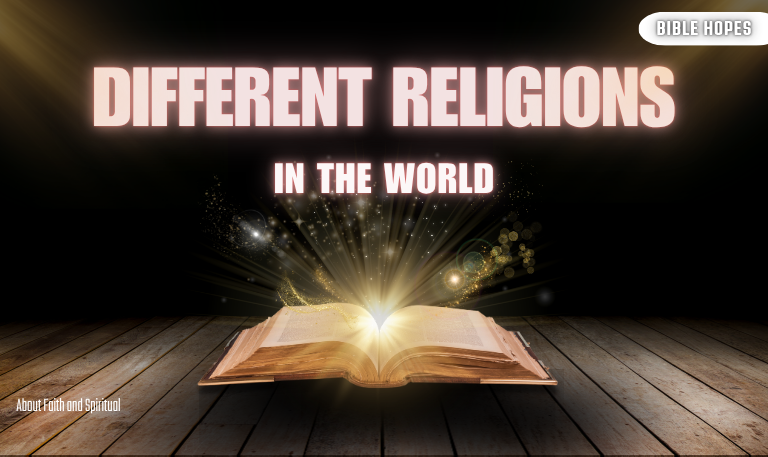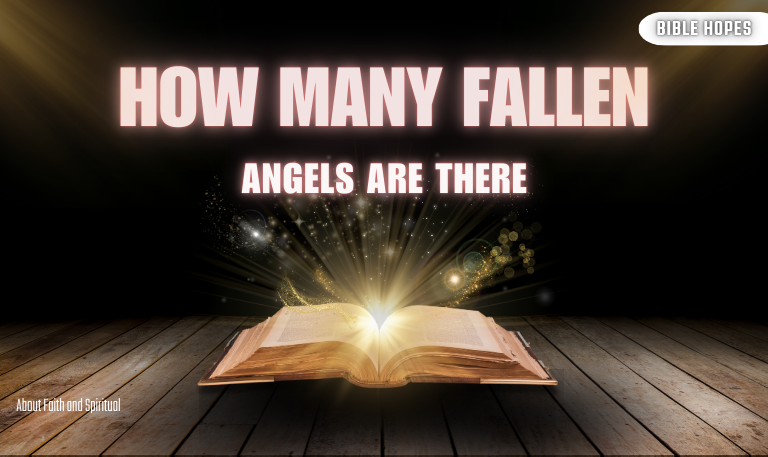Religion has shaped human civilization for millennia, influencing culture, law, ethics, and personal identity. Understanding the different religions in the world not only broadens our knowledge but fosters tolerance, respect, and intercultural dialogue. This comprehensive guide explores the major religions, indigenous faiths, modern spiritual movements, and their impact on societies globally.
What Is Religion? Understanding Faith and Belief Systems
At its core, religion is a system of beliefs, practices, and rituals centered around questions of existence, morality, and the divine. It answers profound human inquiries: Why are we here? What is our purpose? What happens after death? Religions offer frameworks to connect with higher powers, explain natural phenomena, and create community bonds.
Common Elements Across Religions
Beliefs: Ideas about gods, creation, the afterlife, and morality.
Rituals: Ceremonies such as prayer, meditation, worship, and rites of passage.
Ethics: Moral codes guiding behavior and social order.
Community: Shared identity and practices fostering belonging.
Despite differences, these elements form the backbone of most religious traditions worldwide.
Read Also: Christianity Vs Buddhism
The Major Religions of the World: An Overview
Approximately 85% of the global population adheres to one of the major world religions. Each offers unique perspectives on divinity, humanity, and the cosmos.
1. Christianity
Followers: ~2.4 billion
Core Belief: Jesus Christ as the Son of God and savior.
Sacred Text: Bible (Old and New Testament)
Branches: Catholicism, Protestantism, Eastern Orthodoxy
Practices: Prayer, sacraments (e.g., baptism, communion), worship services.
Christianity emphasizes salvation, love, and forgiveness and has profoundly influenced Western culture and law.
2. Islam
Followers: ~1.9 billion
Core Belief: Submission to one God (Allah) and following Prophet Muhammad.
Sacred Text: Quran
Branches: Sunni (majority), Shia
Practices: The Five Pillars—Shahada (faith), Salat (prayer), Zakat (charity), Sawm (fasting), Hajj (pilgrimage).
Islam has a rich tradition of scholarship, art, and law and spans diverse cultures from the Middle East to Southeast Asia.
3. Hinduism
Followers: ~1.2 billion
Core Belief: A complex pantheon of gods, karma, dharma, and reincarnation.
Sacred Texts: Vedas, Upanishads, Bhagavad Gita
Practices: Yoga, meditation, rituals, festivals (e.g., Diwali).
One of the oldest religions, Hinduism shapes life in India and Nepal with its diverse philosophies and rituals.
4. Buddhism
Followers: ~520 million
Core Belief: The Four Noble Truths and the path to enlightenment (Nirvana).
Founder: Siddhartha Gautama (Buddha)
Branches: Theravāda, Mahāyāna, Vajrayāna
Practices: Meditation, mindfulness, ethical living.
Buddhism focuses on overcoming suffering and has spread widely across Asia and the West.
5. Judaism
Followers: ~15 million
Core Belief: Covenant between God and the Jewish people.
Sacred Text: Tanakh (Hebrew Bible)
Practices: Observance of laws (Halakha), festivals (Passover, Yom Kippur), prayer.
Judaism’s rich traditions have influenced Christianity and Islam.
6. Sikhism
Followers: ~30 million
Core Belief: One God and equality of all humans.
Founder: Guru Nanak
Sacred Text: Guru Granth Sahib
Practices: Prayer, community service, wearing the Five Ks.
Centered mainly in India, Sikhism advocates devotion, justice, and community.
7. Other Notable Religions
Jainism: Emphasizes non-violence and asceticism.
Bahá’í Faith: Advocates unity of all religions and humanity.
Shinto: Indigenous Japanese nature worship.
Indigenous and Tribal Religions: The Roots of Spirituality
Indigenous religions are deeply tied to local landscapes, ancestors, and oral traditions. They emphasize harmony with nature and ancestral spirits.
Examples of Indigenous Religions
Native American Spirituality: Totemism, vision quests, and nature spirits.
African Traditional Religions: Ancestor worship and rituals linked to community life.
Australian Aboriginal Beliefs: Dreamtime stories connecting people to the land.
These religions often survive alongside dominant faiths and contribute vital cultural heritage.
New Religious Movements and Modern Spiritualities
Since the 19th century, many new spiritual paths have emerged.
Examples
New Age Spirituality: Eclectic beliefs, crystal healing, astrology.
Wicca and Neo-Paganism: Revival of ancient nature-based religions.
Scientology: Modern self-help and spiritual growth system.
These movements appeal to those seeking personal spiritual experiences outside traditional institutions.
Comparative Religion: Finding Common Ground
Despite differences, religions share many themes:
| Theme | Examples |
|---|---|
| Creation | Genesis (Christianity), Big Bang interpretations (various) |
| Morality | Ten Commandments, Five Precepts (Buddhism) |
| Afterlife | Heaven/Hell, Reincarnation, Nirvana |
Religious symbols like the cross, crescent, and Om have deep spiritual meaning.
Religion and Culture: How Faith Shapes Life
Religion influences art, music, cuisine, festivals, and societal norms.
Festivals: Christmas (Christianity), Eid (Islam), Diwali (Hinduism), Hanukkah (Judaism)
Art: Islamic calligraphy, Buddhist mandalas, Christian iconography
Music: Gospel, Qawwali, Kirtan
These cultural expressions deepen communal identity and spiritual experience.
The Spread of Religions: Historical and Modern Perspectives
Religions spread through trade, migration, conquest, and missionary work.
Silk Road: Spread Buddhism across Asia
Roman Empire: Adoption of Christianity as state religion
Islamic Caliphates: Expansion across Africa and Asia
Today, migration and globalization continue to influence religious demographics.
Religion and Politics: Intertwined Yet Complex
Religion often intersects with governance:
Theocracy: Iran’s Islamic government
Secular States: United States, India (officially secular)
Religious Conflicts: Historical Crusades, contemporary tensions
Balancing religious freedom and state neutrality remains a global challenge.
Interfaith Dialogue and Religious Tolerance
Promoting understanding among different faiths helps reduce conflict.
Examples: Parliament of the World’s Religions, United Religions Initiative
Benefits: Peacebuilding, cultural exchange, mutual respect
Challenges: Dogma, historical grievances
Fostering dialogue is key in increasingly pluralistic societies.
Religion and Science: Dialogue and Debate
The relationship between religion and science varies:
Conflicts: Evolution vs. creationism debates
Convergences: Theistic evolution, spiritual interpretations of quantum physics
Philosophical Views: Science explains “how,” religion explains “why.”
Both fields offer unique insights into human existence.
Religion in the Modern World: Trends and Challenges
Rise of Secularism: Increasing numbers identify as non-religious.
Spiritual but Not Religious: Growing trend emphasizing personal spirituality.
Religion and Social Justice: Faith-based activism for equality and environmentalism.
Religion adapts continually to modern social and technological changes.
Read Also: Hebrew Vs Aramaic
How to Respect Different Religions
Educate yourself about diverse beliefs
Avoid stereotypes and generalizations
Participate respectfully in cultural events
Promote open-minded conversations
Respect is foundational for peaceful coexistence.
Different Religions in the World FAQs
Q: What are the top 5 largest religions in the world?
A: Christianity, Islam, Hinduism, Buddhism, and Sikhism.
Q: How do religions differ in their concept of God?
A: Some believe in one God (monotheism), many gods (polytheism), or none (non-theistic).
Q: What is the difference between monotheism and polytheism?
A: Monotheism worships one God; polytheism worships multiple gods.
Q: Are there religions without gods?
A: Yes, Buddhism and Jainism focus more on philosophy and ethics than deities.
Q: How does religion influence daily life?
A: Through rituals, moral guidance, community support, and cultural identity.
Q: What is atheism and agnosticism?
A: Atheism denies belief in gods; agnosticism claims the existence of gods is unknown or unknowable.
Q: Can people follow more than one religion?
A: Some practice syncretism, blending elements of multiple faiths.
Q: What are some examples of religious festivals?
A: Christmas, Eid al-Fitr, Diwali, Hanukkah, Vesak.
Q: How do religions view the afterlife?
A: Views range from heaven and hell to reincarnation or liberation from rebirth.
Q: How can interfaith dialogue help reduce religious conflicts?
A: By fostering understanding, respect, and cooperation among diverse faiths.
Conclusion
Exploring the different religions in the world reveals the rich diversity of human spirituality and culture. From ancient indigenous beliefs to major world religions and new spiritual movements, understanding these traditions promotes tolerance, enriches our worldview, and connects us to the universal human quest for meaning.



![15 Pink Bible Verses | Discover Meaning, Love [2025 Guide] 5 15-Pink-Bible-Verses-Discover-Meaning,-Love-[2025-Guide]](https://biblehopes.com/wp-content/uploads/2025/05/15-Pink-Bible-Verses-Discover-Meaning-Love-2025-Guide.png)